2018 InterFOS
WSBK 30-year celebration
Superbike Legends Clash
With Mark Bracks – Images by Half Light Photography
The 13th edition of the QBE International Festival of Speed is now a memory but what another successful four-day event it was. Staged at Sydney Motorsport Park over March 22-25, the event was run by the Post Classic Racing Association of NSW (PCRA), with chief organiser, Peter MacMillan the main man that is responsible for a great percentage of the promotion and organisation of the event.
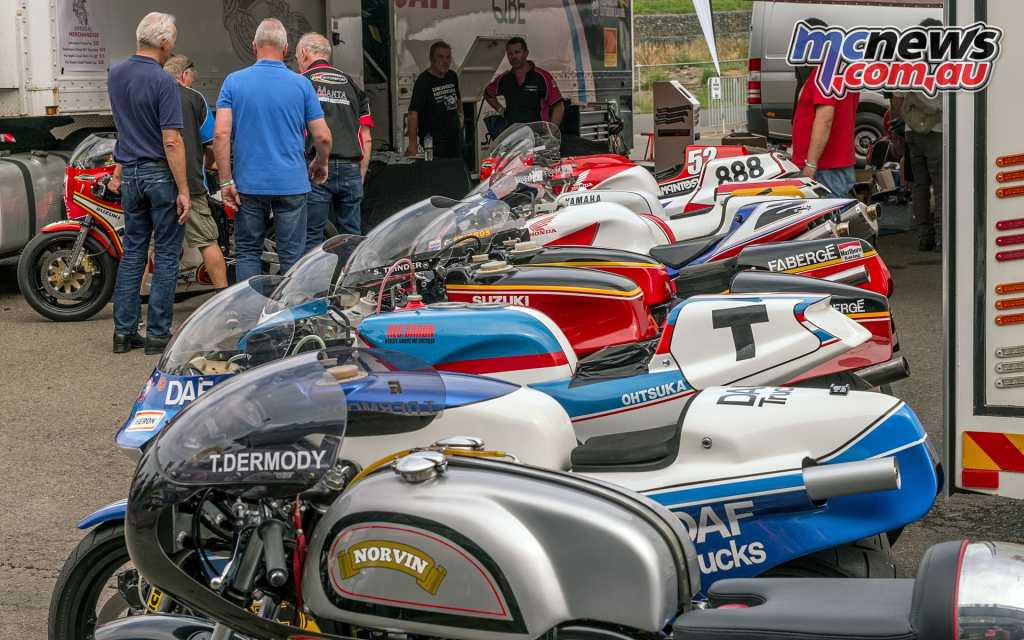
The event marked the last of the three major annual classic road race events in the country. The “season” starts with the Australian Historic Championships, generally held in November, then the International Island Classic over the Australia Day weekend and concludes with the International Festival of Speed in mid-to-late March.
InterFOS is a celebration of classic bikes and racing with a different theme every year to showcase a particular period of motorcycle history. This year the meeting celebrated 30 years of the Superbike World Championship, and what a magnificent celebration it was.
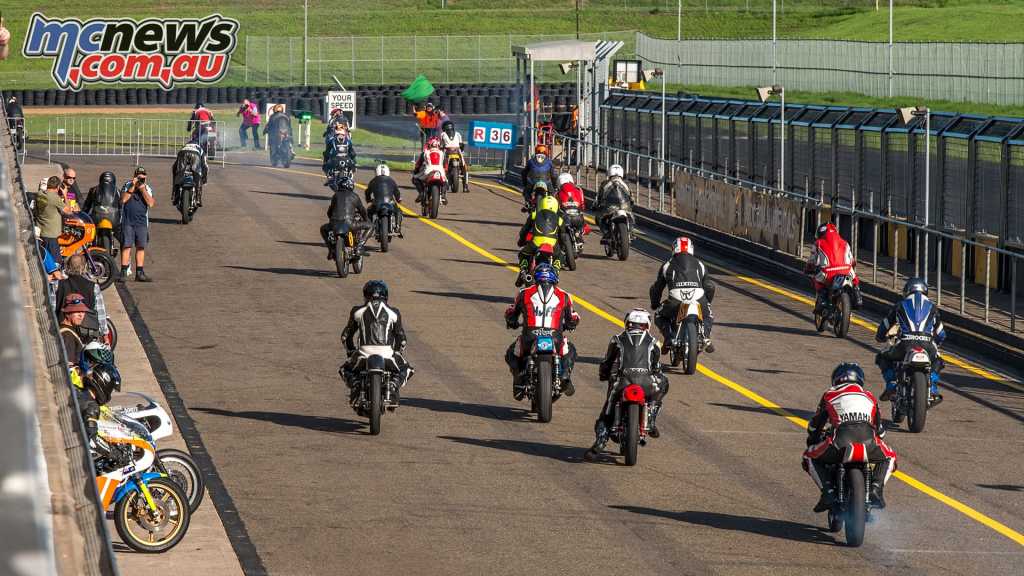
Peter MacMillan
“It was another very successful event, considering the weather, it was a very similar crowd to last year when Ago came out. We are always striving to do something different and it was fitting that we acknowledged what Superbike racing has done over the years, in the 30th anniversary year of the Superbike World Championship.”
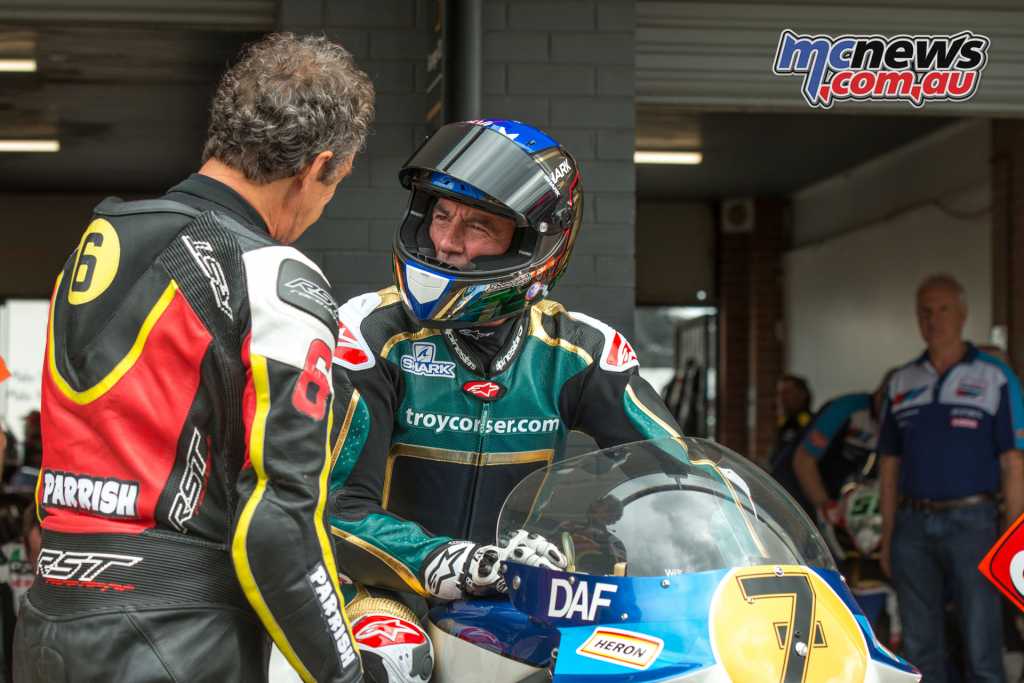
The list of notable guests assembled to assist in the occasion included multiple World Champions, Troy Bayliss and Troy Corser, both of whom were making their first appearances at the event.
Joining them was people’s champion Pierfrancesco Chili who made his second appearance, with the trio adding to the now regular visitation of Steve (Stavros) Parrish, Kevin Magee, Chris Vermeulen and Jeremy McWilliams.
The meeting differs in a number of ways to the longer running International Island Classic, the Phillip Island event celebrated 25 years this year and offers a more serious level of outright competition. Both events possess their own unique character, with neither taking anything away from the other.
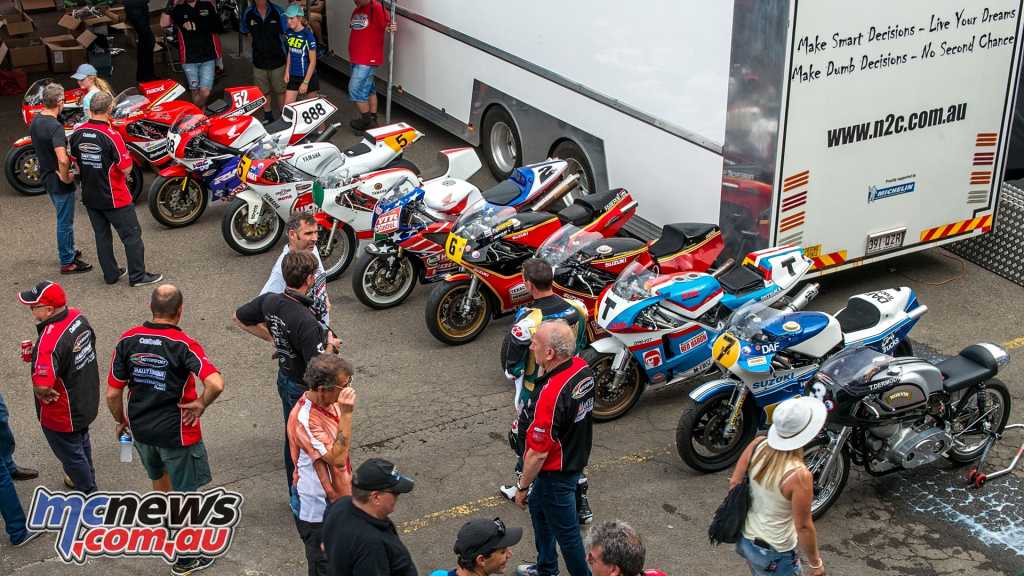
One thing that both events have in common is that long time AMCN editor, the late Ken Wootton, had a part in the establishment of both events. As such he is commemorated in different ways at both events.
The Island Classic features the International Challenge that is taken very seriously by all involved, as proven this year by Colin Edwards, the Texan extremely surprised at how serious the lads take the racing at the Island in the battles for national supremacy.
There is a different approach at InterFOS. The main attraction at SMSP is more of parade laps, and static displays of bikes of the “Unobtainium” variety that are very rarely seen. Additionally, some of very rare machines are put on track with the riders’ philosophy of “ride it like ya stole it” as many are ridden for what they were designed to do; race!
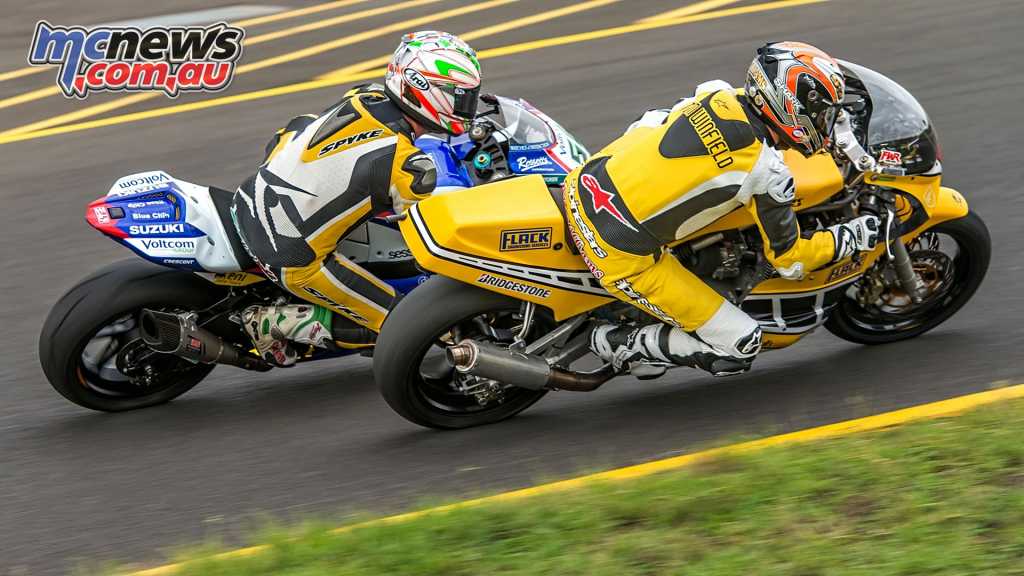
For the most part, the term “Parade Laps” should be used very loosely as they are probably the most rapid parade laps witnessed in the world. Titled the “Superbike Legends Clash,” some of the legends couldn’t help themselves!
Superbike Legends Clash
In the four legs, Corser, Chili and McWilliams were all over each other and generally mucking up and having a blast as they put on an inspiring show that demonstrated that they still have a fair bit of pace. With a bit in reserve! Even Bayliss had a dip with his mates during Sunday, dicing with Corser et al.
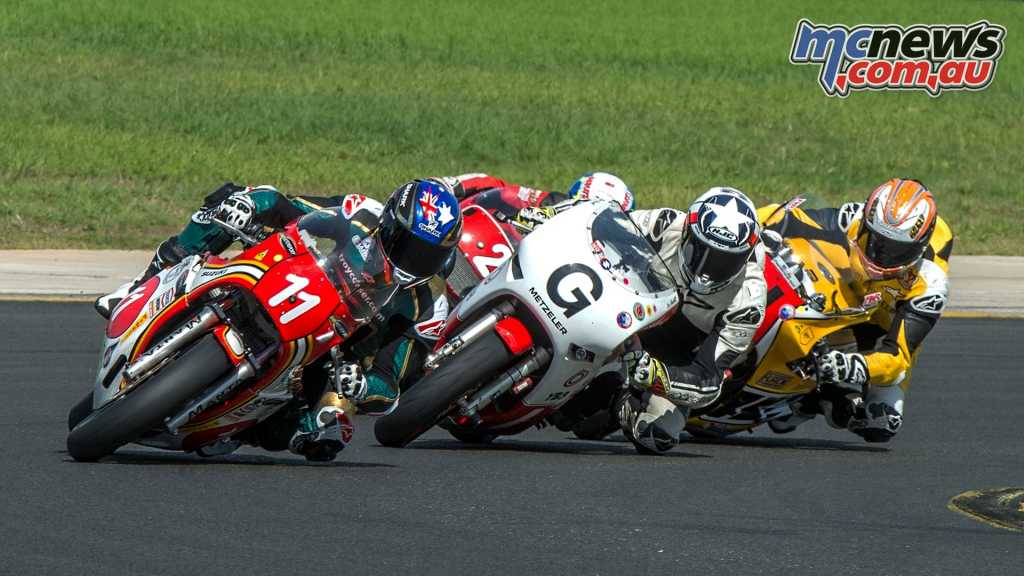
There is a great disparity between the specs and ages of the bikes – and the riders – that are “competing” in the Legends Clash, so the field tends to string out a bit. It didn’t matter as it provides a bonus by hearing the bikes individually and was a privilege for the public to see so many bikes of such uniqueness, out on track, that are a major part of motorcycle road racing history.
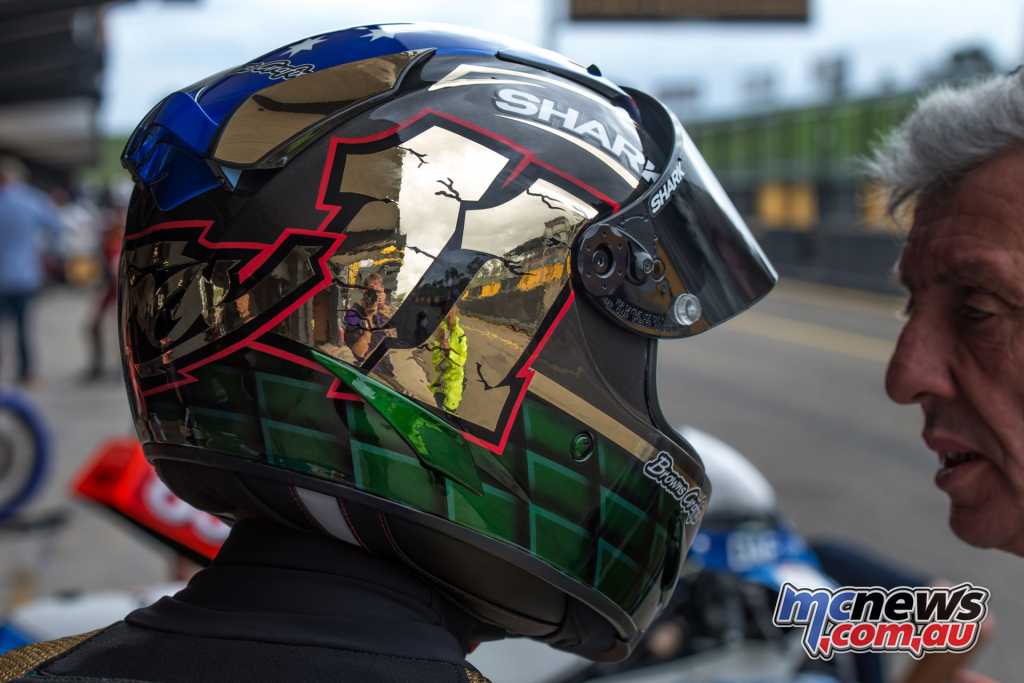
Leave it up to the larrikins at the front to carve each other up with extremely entertaining displays at a fairly rapid pace while, seemingly, keeping something in reserve. A couple of these living legends, Corser and McWilliams actually raced in the Period 5 category races, dicing and slicing with all the others.
Many of the bikes in the Legends Clash and the weekend’s races were part of the astonishing collection owned by Tom Dermody. His contribution included the Yamaha YZF500, ridden by Kevin Magee to second place in the 1992 All Japan Championship.
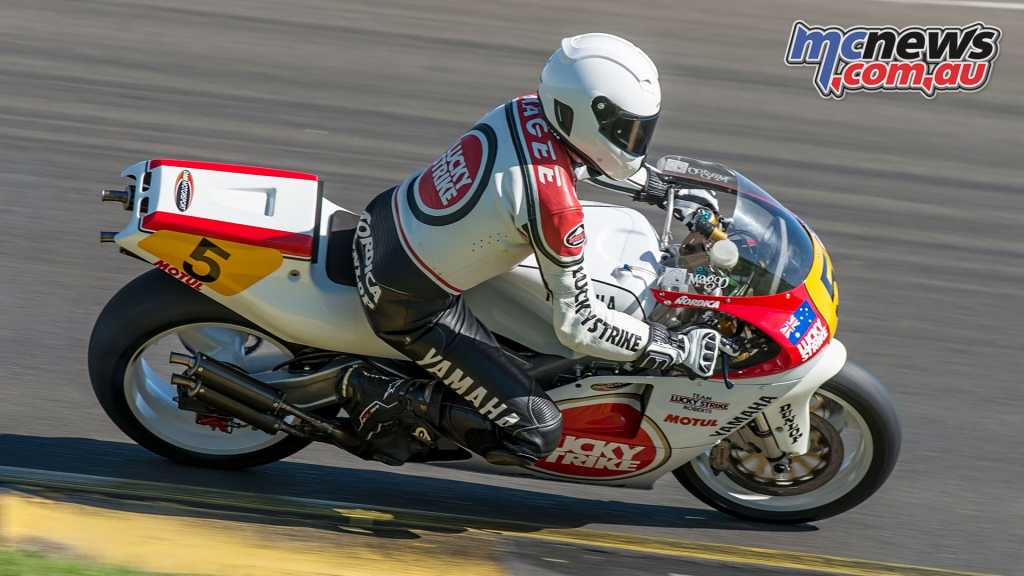
Last year it was in the livery of that 1992 championship year but this year the bike was given a time-machine paint job to be a replica scheme of the 1988/89 Team Lucky Strike Roberts outfit – 30 years since Magee’s initial season in the 500cc World Championship.
Other bikes Tom released for track use included the ex-Steve Trinder Suzuki RGV500 co-owned by ex-GP rider, Stu Avant, and ridden by Steve Parrish; the Suzuki XR69 that Troy Corser rode with aplomb – the same bike David Johnson rode to victory at the Island Classic in January; a Colin Edwards replica Honda VTR SP2; a full factory Moriwaki Honda RC30 and a Norvin.
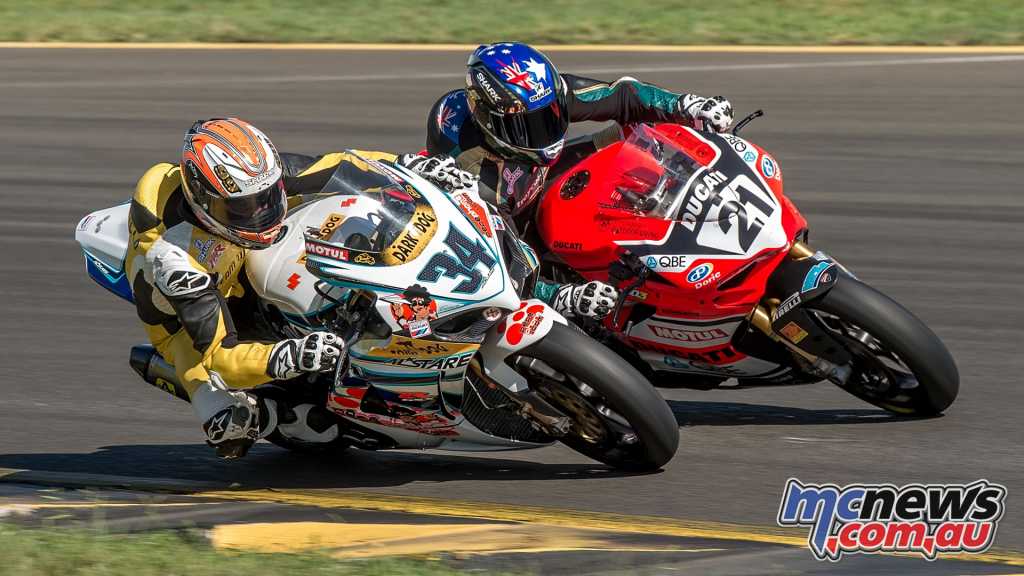
Another collector, Englishman Steve Wheatman returned for his third visit to the event and brought out another few delectable pieces of machinery including Eugene Laverty’s Voltcom Suzuki GSX-1000R that he rode to victory at Phillip Island and Davide Guigliano’s Dark Dog Suzuki GSX1000R.
On the weekend they were ridden by Chili and McWilliams. McWilliams also ride Steve’s Gallina Suzuki RGB500, while Roger Winfield left his Suzuki XR69 here after the Island Classic for “Jez” to ride as well.
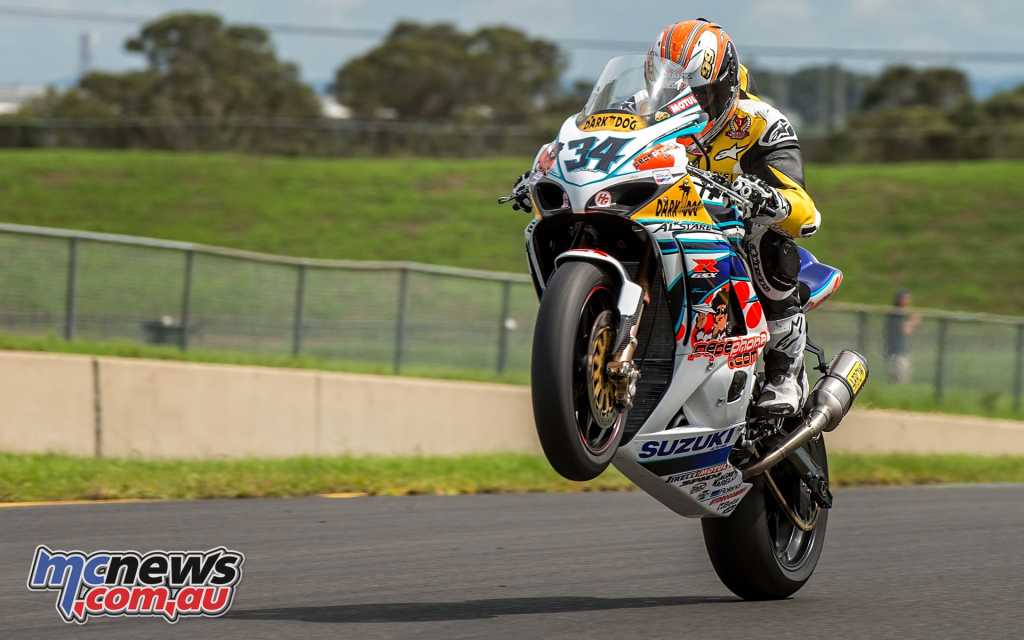
Not a bad selection to have in your shed. And, the bikes mentioned above are only a part of their personal private collections. Stunning.
Troy Bayliss fronted with his 2001 Championship winning Ducati, that hadn’t been ridden since that inaugural championship victory 17 years ago. It is exactly as Troy won his title at Imola. He wore the exact same leathers he wore on the day he won his first title and they still fit, but not too snugly, on the now 49-year-old.
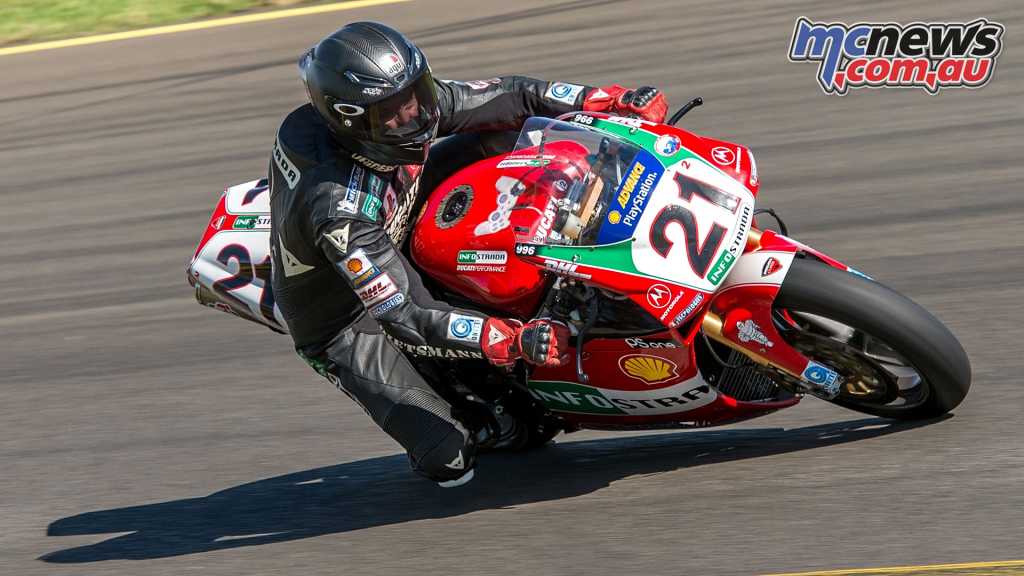
The 996 had been pride of place in his house for years but after a service, and touch up, by co-owner of the team Ben Henry, the beast fired into life within a few cranks of the engine.
Troy Bayliss
“I jumped on and it was like the years stripped away. There are many great memories and this event brought them all back. It is still such a great bike to ride.”
Bayliss also had his two current Desmo Sport Ducati Panigales ASBK race bikes on display. As a bonus to all in attendance, both saw track time during the Legends Clash as Corser rode them. He wasn’t taking it too easy especially doing stand up monos for half the length of Brabham Straight.
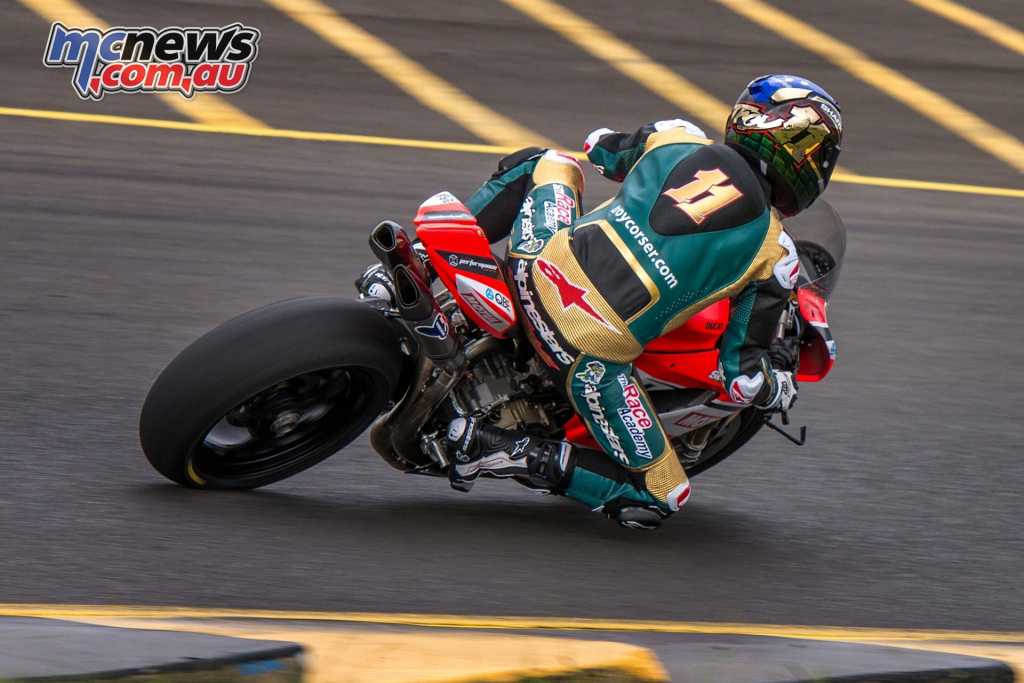
There were plenty more being punted around in the headline “races,” including the Paul-Edwards owned, replica Barry Sheene Suzuki RGB500, ridden by Vermuelen. Additionally, there were many other bikes associated with Australian Superbike racing including two Suzukis Katanas from New Zealand that Dave Hiscock competed on, as well as a Honda RC1000 that Andrew Johnson raced in the Swann Series.
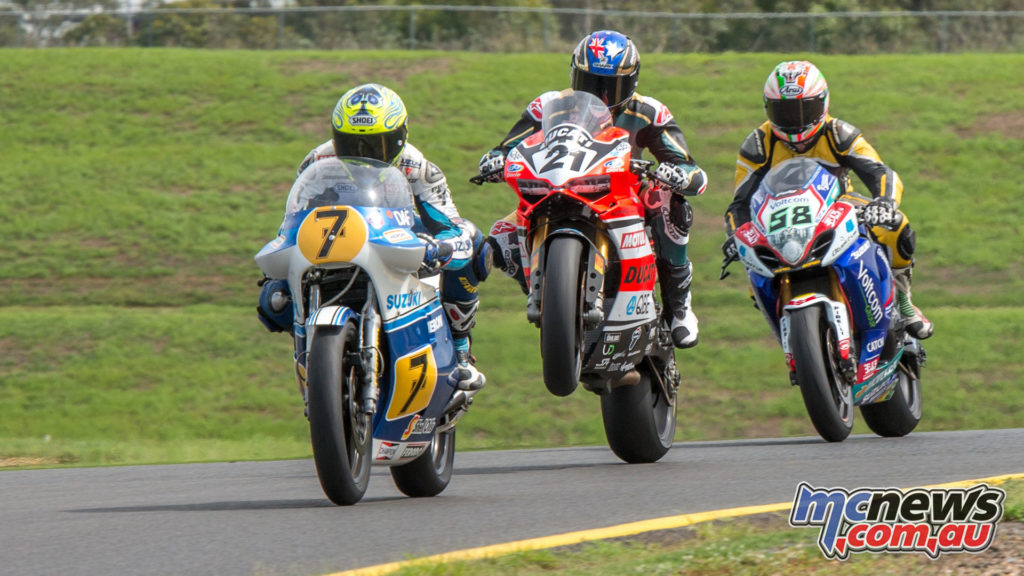
One of the bikes in the static display was a modified, Kawasaki H2 750 triple that competed in the first ever Superbike championship of the very early ‘70s; the Chesterfield Series.
The other notable bike from that era, that has recently been found after years covered up in a private garage, was also on display. An added bonus was that it was ridden in the Superbike Legends clash. The bike is the Yamaha Pitmans XS1100 chain-drive bike that was converted from the standard shaft-drive for racing. Mal Pitman was on hand to prepare the bike and explained, in detail, a few anecdotes about those times that are still very vivid memories. What a historic bit of kit it is.
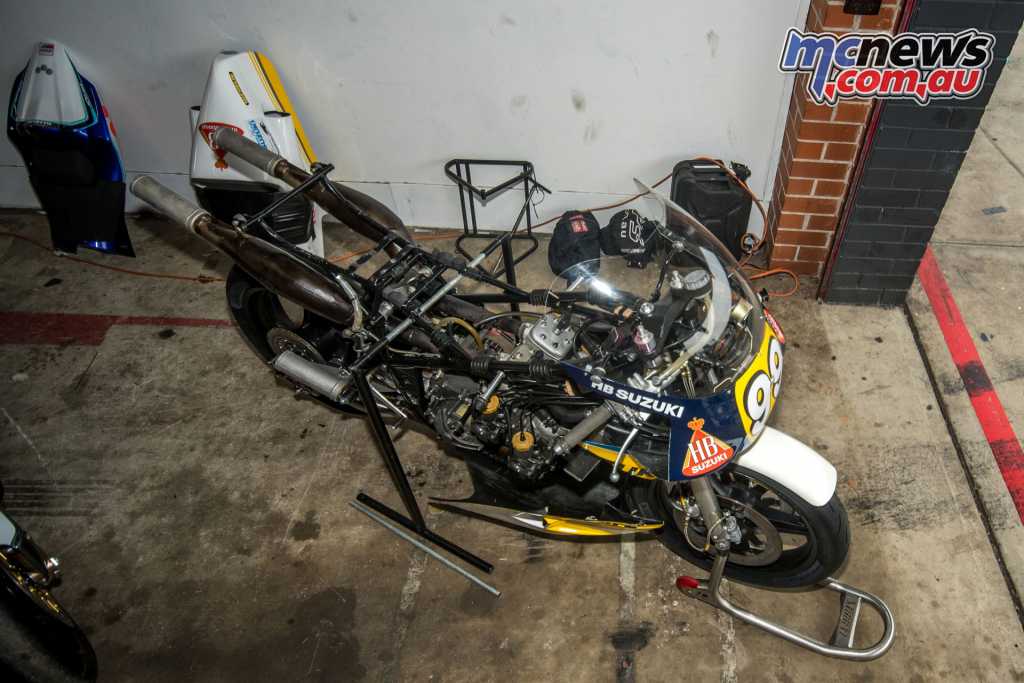
It is arguable what was the most coveted bike that was put through its paces but a massive amount of attention was focused on Troy Bayliss’s 2001 title-winning Ducati 998, owned by the three times world champion.
There were over 300 entries and over 440 bikes out on track spread across 59 races. The 59 races were split into 11 separate categories between the 36 different classes, including four sidecar categories, that contested five races each, so there was plenty of silverware up for the taking.
Mix in sketchy conditions of heat, drizzle and thunderstorms and it was a divine recipe to the track gods to inflict their wrath on over-exuberance, of which there was plenty.
Thursday and Friday offered the worst conditions with plenty of wet track time but competitors, on the whole, behaved themselves with a surprisingly small amount of crashes. Come Saturday under fine and clear skies, it seemed an open invitation to stretch throttle cables.
There were six red flags in the first seven races as the perfect conditions took their toll on riders and machines. In total there were 46 on track incidents split between mechanical issues and crashes.
There were also a number of lap records broken throughout the weekend reflecting how hard the competition is, in all grades.
Saturday was dry until late in the afternoon when a thunderstorm circled the track before dumping a massive load of precipitation on the final few races of the day. Bizarrely, conservative riding behaviour returned and there were a very small amount of crashes.
Sunday was fine and hot with no rain while the on track action unfolded, but just as the trophy presentation commenced, a massive storm hit the track.
During the entire four days there were 88 mechanical recoveries, 40 crashes 12 red flags and one helicopter ride (compared to the six “choppers” last year), spread over 100 sessions with 59 races in total.
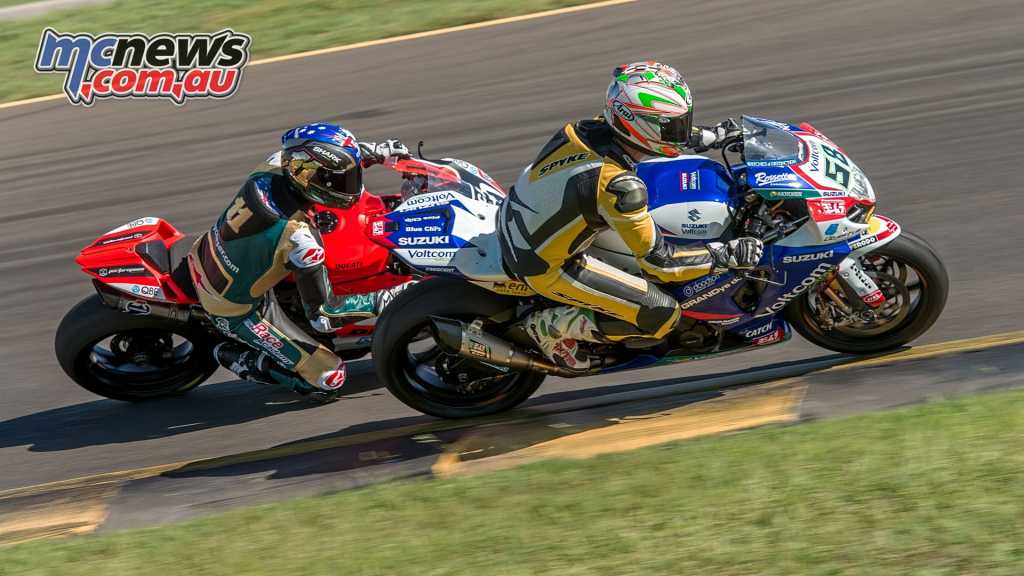
Crammed into this were also four feature races; the Barry Sheene Trophy for one heat of the Period 3 500cc class, in honour of the man the event was originally named after. The Ken Lucas Senior Challenge where rider and machine must have a combined age of over 100 years old, the Ken Wootton P4 Challenge and the Paul Dobbs Challenge for P4 750cc bikes in honour of the likeable Kiwi who lost his life at the Isle of Man.























